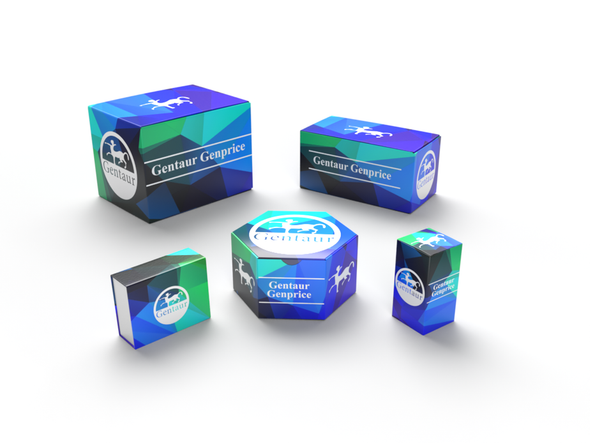740
Human Plasminogen-related protein B (PLGLB1) ELISA Kit | AE26977HU
- SKU:
- 740-AE26977HU
- Availability:
- Usually ships in 5 working days
Description
Human Plasminogen-related protein B (PLGLB1) ELISA Kit | AE26977HU | Gentaur UK, US & Europe Distribution
Species Reactivity: Human (Homo sapiens)
Abbreviation: PLGLB1
Alternative Name: PLGL; PLGP1; PRGB; PRP-B; OTTHUMP00000203509|OTTHUMP00000203511|type B plasminogen related
Application: ELISA
Range: 0.31-20 ng/mL
Sensitivity: 0.156 ng/mL
Intra-Assay: ≤4.5%
Inter-Assay: ≤6.9%
Recovery: 1, 04
Sample Type: Serum, Plasma, Other biological fluids
Detection Method: Sandwich
Analysis Method : Quantitive
Test Principale: This assay employs a two-site sandwich ELISA to quantitate PLGLB1 in samples. An antibody specific for PLGLB1 has been pre-coated onto a microplate. Standards and samples are pipetted into the wells and anyPLGLB1 present is bound by the immobilized antibody. After removing any unbound substances, a biotin-conjugated antibody specific for PLGLB1 is added to the wells. After washing, Streptavidin conjugated Horseradish Peroxidase (HRP) is added to the wells. Following a wash to remove any unbound avidin-enzyme reagent, a substrate solution is added to the wells and color develops in proportion to the amount of PLGLB1 bound in the initial step. The color development is stopped and the intensity of the color is measured.
Product Overview: The deduced 96-amino peptide has a calculated molecular mass of 11.2 kD. PRGB has signal sequence followed by a 77-amino acid stretch that is identical to the N terminus of plasminogen and highly similar to the homologous stretch in PRGA (PLGLA) . PRGB is predicted to have 2 disulfide bonds and assume a secondary structure including an alpha helix and antiparallel beta sheet. Northern blot analysis using a probe that did not differentiate between PRGA and PRGB detected PRG only in liver and in a lymphoblastic leukemia cell line. The 1.1-kb 5-prime flanking sequence directed basal liver-specific expression in HepG2 cells, and deletion analysis identified positive and negative elements in the PLGLB1 promoter.
Stability: The stability of ELISA kit is determined by the loss rate of activity. The loss rate of this kit is less than 5% within the expiration date under appropriate storage condition. The loss rate was determined by accelerated thermal degradation test. Keep the kit at 37°C for 4 and 7 days, and compare O.D.values of the kit kept at 37°C with that of at recommended temperature. (referring from China Biological Products Standard, which was calculated by the Arrhenius equation. For ELISA kit, 4 days storage at 37°C can be considered as 6 months at 2 - 8°C, which means 7 days at 37°C equaling 12 months at 2 - 8°C) .






